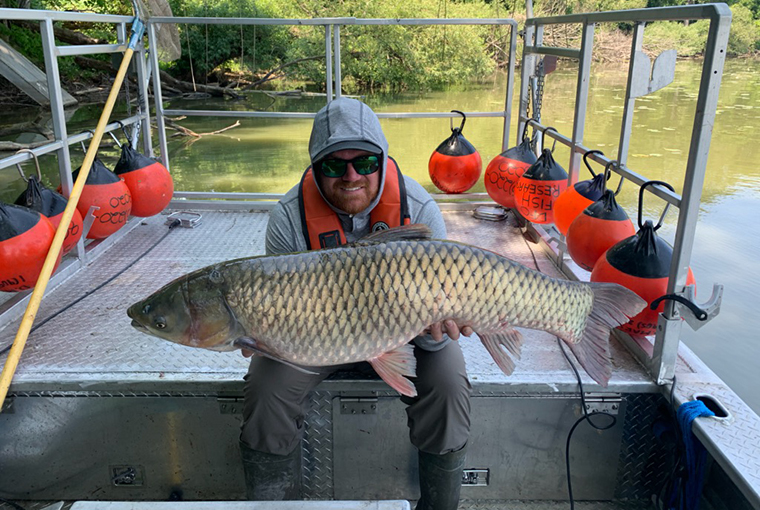Two grass carp caught in Great Lakes

Two grass carp were captured in Ontario waters this summer, the Ontario Federation of Angers and Hunters (OFAH) Invading Species Awareness Program (ISAP) confirmed.
The first was caught by an angler near Point Albino on Lake Erie who reported it via the Invading Species Hotline, while the second — a 16.324 kg, or approximately 36-pound fish — was captured by the Department of Fisheries and Oceans (DFO) Asian carps surveillance crews near Jordan Harbour on Lake Ontario.
The good news is grass carp, the only species of Asian carp found in the province to date, does not have an established population, aquatic program specialist Brook Schryer reminded. The bad news is that they remain an imminent threat.
Grass carp are few
Grass carp have been here for years, but in exceptionally small numbers. The DFO has suggested 10 fertile females and 10 fertile males congregating in the same area are needed to have a successful reproductive cycle, he noted.
“To put it into perspective, in 2019, DFO and its partners captured approximately 45,000 fish during their Asian carps surveillance and not a single one was an Asian carp,” he stated. “Generally speaking, it means that grass carp are here, but their numbers are too low to achieve a successful reproductive cycle in Ontario’s waters.”
Many unknowns make it challenging to predict whether they will multiply, Schryer added. What is known is that only adult fish have been found, most had been sterilized, and many northern US states allow stocking of the fish for biocontrol of aquatic weeds.
Anglers’ help needed
Anglers can help in many ways, such as being aware of the issue and learning how to identify the invasive fish. They look much like many native and non-native species such as creek chub, fallfish, and common carp, he said. Grass carp have short dorsal fins, eyes that sit even with their mouth, and large scales that appear cross-hatched. Also, unlike common carp, they do not have barbels.
“Understanding the key differences as well as teaching others will help anglers properly identify the fish if they do happen to catch one while angling,” Schryer said.
Other carp species
Other species of Asian carp include bighead, black, and silver carp. “This is not the jumping silver carp that many people see on YouTube,” he added.
“That being said, if grass carp were to become established in our waters, it would be a direct threat to our native species through competition and habitat destruction; it would alter water quality through the removal of aquatic plants and causing increases in the likelihood of algal blooms, and would fundamentally alter the food chain.”
ISAP, founded in 1992, is a partnership between the OFAH and Ministry of Natural Resources and Forestry dedicated to public education, addressing pathways of spread, and surveillance and detection of invasive species.
Those who suspect they’ve seen an Asian carp are asked to take a photograph and call the hotline at 1-800-563-7711 or provide a report online by clicking here.
Download a grass carp fact sheet here.
